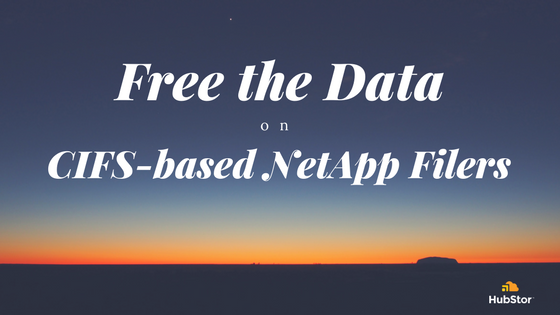Unlike backup data protection, archiving moves inactive files from primary storage to less expensive storage tiers. Since inactive data comprises 80% or more of your entire data store, archiving not only gains back capacity but also optimizes existing backups, defers new storage spending, streamlines future upgrades, and eases data migration.
New technologies have added even more value to archiving. Seamless storage tiering integrates tightly with networked file storage, and uses transparent stubbing and policies to archive inactive data to the cloud.
The problem is that NetApp does not provide seamless file-level tiering for its CIFS filers. It requires its users to either store inactive data on expensive primary storage, or use NetApp software – namely AltaVault -- as their path to the cloud-based storage.
NetApp and Seamless Storage Tiering – or Not
NetApp AltaVault is a cloud gateway appliance that offers a VTL interface for tape-based backup applications. The gateway handles backup well enough, but does not provide file-level stubbing or sophisticated data management in the cloud.
NetApp’s lack of seamless archiving leads to serious data lock-in issues for NetApp customers. These customers adopt NetApp storage for scalability and performance, only to find themselves locked into an expensive cycle of expanding storage capacity and hardware refreshes.
NetApp users are requesting seamless storage tiering that is tightly integrated with their NetApp CIFS-based filers. The solution is a universal approach to seamless file archiving that doesn’t depend on NetApp -- or Dell EMC or any other file storage vendor, for that matter. This technology simply runs file-level cloud storage tiering on any CIFS- or NFS-based storage system and on Windows file shares.
It Starts with Tiering Old Data to the Cloud
Imagine taking a policy-based solution that administers tiering from an intelligent virtual cloud gateway, and enables cloud data management, giving you the ability to tackle the long-term retention problem without disrupting users or re-architecting applications.

Non-intrusive link-based stubbing
The archiving process starts with link-based stubbing. File-based transparent stubbing transforms files into links that remain in the original file directory on primary storage. The link serves to provide users and applications with a convenient in-place recall from the archive tier. If a user clicks on the link file in the CIFS share, even though it physically is not there, it will automatically fetch and open for the user or calling application. The cloud stubbing process is easy to deploy – no need for network layer intercepts or client software agents. And no need to deploy an agent on the NetApp filers! The benefits don’t stop there: stubbing also streamlines hardware refreshes and data migrations because the cloud archive lets you recover and migrate data on-premises as links.
Policy-controlled cloud tiering
Policies automate the storage tiering process. Admins can fine-tune archiving decisions to data subsets using a variety of factors such as file type, size, age, and other critera. For example, admins can create a policy that stubs Word files that are larger than 5 MB and haven’t been accessed in 6 months. The archiving process compresses the file content, and moves it to an intelligent cloud storage tier with deduplication, encryption, and redundancy. You might have policies that are more aggressive for a 'closed projects' folder while you run more relaxed tiering policies for user home directories.
Intelligent cloud archive management
Intelligent cloud storage tiering for your NetApp filers includes a local caching option that temporarily stores recalled archive data in a local cache, which minimizes subsequent recalls to the cloud for the same content. If IT needs to download multiple files for eDiscovery or governance, they can do it quickly and cost-effectively. Egress activity reports give customers actionable insight into optimizing their tiering policies. And data classification, file analytics, chargeback, retention, and in-cloud storage tiering to Cool and Archive tiers in the cloud make it a long-term retention platform with full data governance.
Leverage the Cloud to Get Out of Storage Vendor Lock-in
Data lock-in in NetApp CIFS-based filers is no joke.
File-level storage tiering gives NetApp customers a release valve to contain storage costs and control data growth from their CIFS-based storage by moving inactive content to the cloud – all without workflow interruptions or integration issues.
NOTE: This post is a follow-up to our previous post on the topic of file-level tiering for NetApp CIFS.



